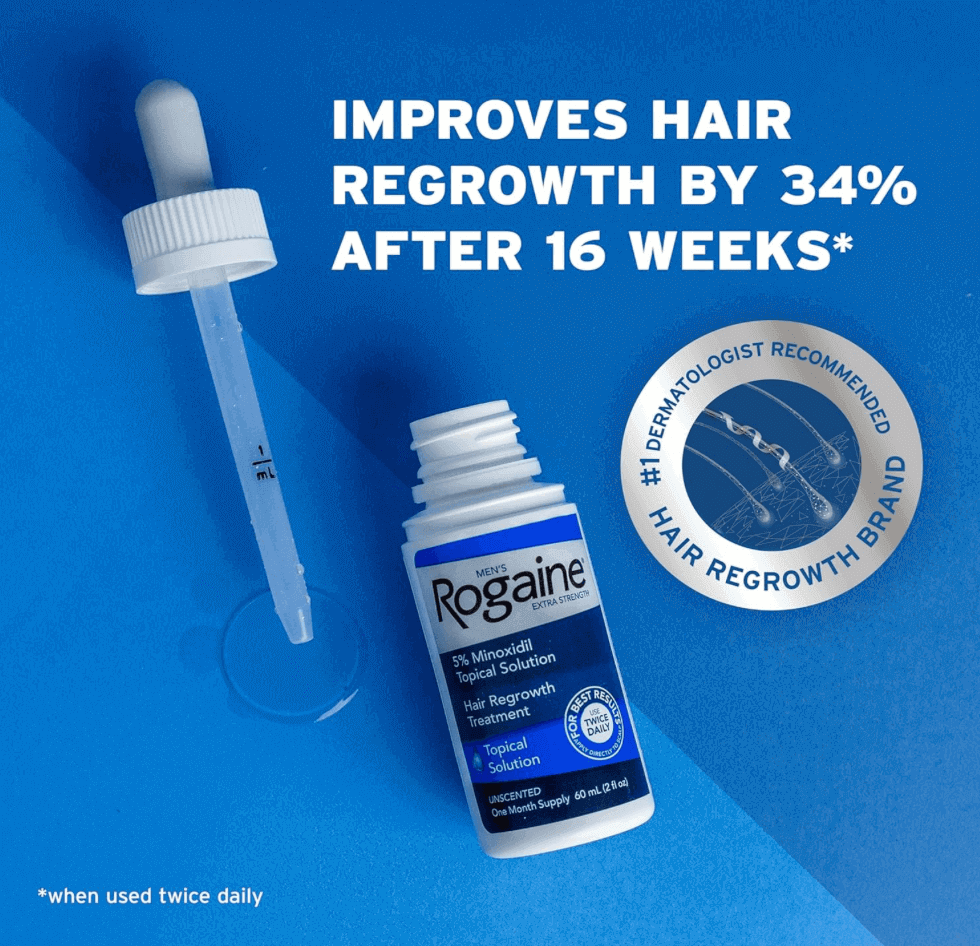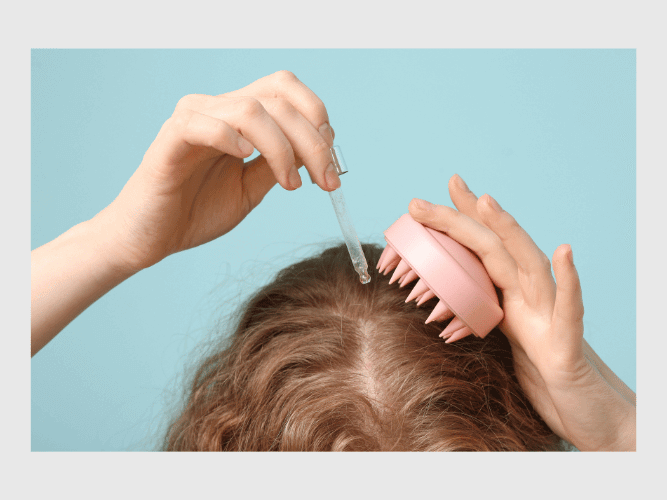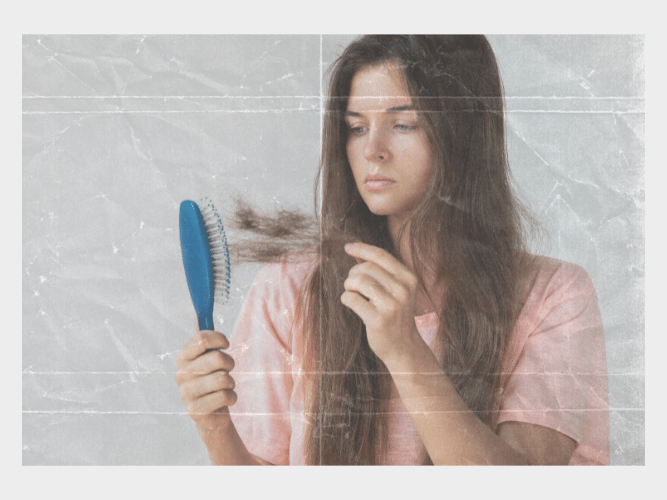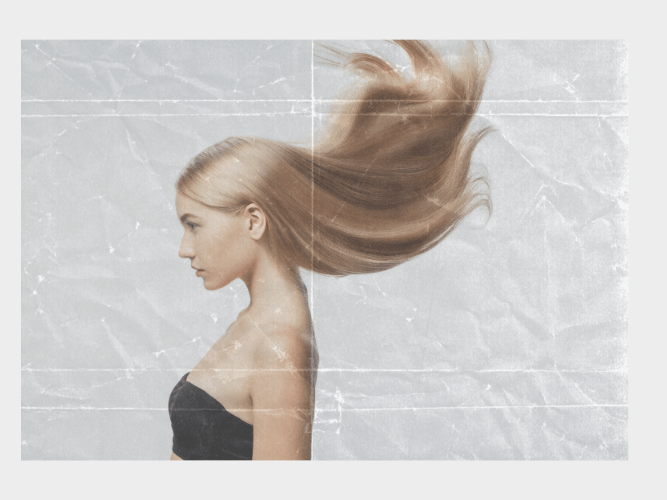Introduction
If you suffer from extreme hair thinning, rapid hair loss, or uncontrollable shedding, you might want to consider Minoxidil for hair loss treatment. This over-the-counter product, often marketed under the brand name Rogaine, can be a game-changer in thickening and strengthening your hair. It’s proven to improve hair growth if used consistently. But before you jump into using it, here are the top three tips to maximize its benefits while avoiding common pitfalls.
1. Understanding How Minoxidil for Hair Loss Works
Minoxidil works by dilating blood vessels in the scalp, which enhances the delivery of nutrients to hair follicles. This not only promotes healthier hair growth but also prolongs the growth phase (anagen phase), meaning your hair stays on your head longer, making it appear fuller and thicker. The benefits of Minoxidil go beyond just thickening hair — it can significantly slow down the progression of hair loss.
Minoxidil Benefits (Pros)
- Clinically Proven for Hair Growth:
Minoxidil is one of the few FDA-approved treatments for hair loss. It’s backed by clinical studies showing its effectiveness in promoting hair regrowth, particularly for androgenetic alopecia (pattern hair loss). - Improves Blood Circulation to the Scalp:
The active ingredient dilates blood vessels in the scalp, increasing blood flow. This ensures that hair follicles receive more nutrients and oxygen, encouraging healthier hair growth. - Prolongs the Hair Growth Phase:
Minoxidil extends the anagen (growth) phase of hair follicles, leading to thicker and fuller hair. This means existing hairs stay on your scalp longer before shedding. - Easily Accessible Over-the-Counter:
Unlike some prescription hair loss treatments, Minoxidil can be purchased over the counter at most pharmacies and online stores, making it convenient and accessible. - Suitable for Both Men and Women:
Although it’s often marketed separately as Men’s Rogaine and Women’s Rogaine, both genders can benefit from using Minoxidil to combat thinning hair. - Can Be Used on Eyebrows:
For those looking to enhance eyebrow thickness, Minoxidil can be applied carefully with a spoolie brush for fuller brows, making it versatile beyond scalp use. - Works on Multiple Hair Types:
Minoxidil is effective across different hair types and textures, making it suitable for a diverse range of users experiencing hair loss. - Visible Results in 3-6 Months:
While it does require consistency, users can start noticing hair regrowth and increased density within 3 to 6 months of regular use. - Affordable Solution Compared to Other Treatments:
Compared to surgical options like hair transplants, Minoxidil is a cost-effective treatment that offers significant results without the high expense. - Minimal Systemic Absorption:
When applied topically, Minoxidil has minimal absorption into the bloodstream, making it relatively safe for long-term use with fewer systemic side effects than oral medications.
Cons of using Minoxidil for Hair Loss
- Requires Consistent Use:
Minoxidil is not a one-time fix. To maintain results, you need to use it continuously. Once you stop, any hair regrowth achieved is likely to be lost within a few months. - Potential Side Effects:
Some users experience side effects like scalp dryness, flaking, itching, or irritation. In rare cases, Minoxidil can cause dizziness, headaches, or rapid heartbeat. - Unwanted Hair Growth:
If not applied carefully, Minoxidil can cause unwanted hair growth on areas like the face or forehead, especially if it accidentally spreads beyond the scalp during application. - Toxic to Pets:
Minoxidil is toxic to pets, particularly cats and dogs. Even a small amount ingested or absorbed through their skin can be dangerous, so it’s essential to keep it out of their reach. - Delayed Results:
Minoxidil isn’t a quick fix. It can take anywhere from 3 to 6 months to see noticeable results, requiring patience and commitment. - May Not Work for Everyone:
Minoxidil is most effective for individuals with specific types of hair loss (like androgenetic alopecia). It may not yield significant results for other conditions like scarring alopecia or hair loss due to underlying health issues. - Can Cause Scalp Sensitivity:
For individuals with sensitive skin, Minoxidil may cause redness or irritation. Switching to a lower concentration or an oral form may be necessary for some. - Messy Application:
The liquid or foam needs to be applied twice daily, which can be time-consuming and potentially messy, especially if it drips down the face. - Not Safe During Pregnancy or Breastfeeding:
Minoxidil is generally not recommended for pregnant or breastfeeding women due to potential risks to the baby.Learn more HERE about what ingredients to Avoid when pregnant.
2. Be Prepared for the Shedding Phase when using Minoxidil for Hair Loss.
One thing many people don’t expect when starting Minoxidil for hair loss is an initial shedding phase. Yes, you read that correctly — shedding! This can be alarming, but it’s actually a good sign. The “Minoxidil shedding phase” occurs because the product pushes out older, weaker hairs to make way for new, healthier ones. Don’t panic; this process is temporary, usually lasting a few weeks. Just remember that patience and consistency are key to seeing positive results.
Minoxidil Results Timeline
- First 2-4 weeks: Initial shedding phase.
- 3-6 months: Noticeable reduction in hair thinning and increased hair density.
- 6-12 months: Significant regrowth in areas of hair loss.

Men’s Rogaine Extra Strength 5% Minoxidil Topical Solution for Thin Hair, Hair Loss Treatment to Regrow Fuller, Thicker Hair.
Shop HERE on Amazon.
3. Use the Right Product and Apply It Correctly
To get the best results from Minoxidil, you must apply it precisely. Misapplication can cause unwanted hair growth in areas like the face or neck. Here’s a tip: even if you’re a woman, consider buying the men’s version of Rogaine (5%) since it comes in a larger quantity for nearly the same price.
Best Way to Apply Minoxidil

- Apply directly to the scalp twice daily using a dropper or spray nozzle.
- Massage gently to enhance absorption, but avoid spreading it to your face.
- If you experience scalp dryness, consider switching to an oral option.
How to Overcome Common Side Effects of Minoxidil
Minoxidil can cause dryness or flaking on the scalp. If you experience these side effects, try using a moisturizing shampoo or conditioner. In more severe cases, switching to an oral form of Minoxidil can reduce skin irritation Or switch to Oral.
Minoxidil for Eyebrows and Other Areas
Interestingly, Minoxidil is not just for your scalp. You can also use it on your eyebrows for fuller brows. However, be cautious and apply it precisely with a spoolie brush to avoid unwanted facial hair growth.
Best Shampoos that Work Well with Minoxidil
- OUAI Detox Shampoo (for oily scalp):
- Why it pairs well: Minoxidil can sometimes lead to product buildup, especially if used daily. The Way Detox Shampoo is great for controlling excess oil and removing buildup, which can help keep your scalp clean and enhance the absorption of Minoxidil.
- KERASTASE Specifique Balancing Shampoo
- Why it pairs well: Minoxidil can occasionally cause mild scalp irritation, especially if your scalp is already sensitive. The Kerstast Symposium Shampoo, with its anti-inflammatory ingredients like zinc and salicylic acid, can help soothe the scalp and reduce any itchiness or flakiness, making it easier to continue your Minoxidil treatment.
- K 18 Damage Shield Shampoo (for dry scalp and dry hair):
- Why it pairs well: Minoxidil can sometimes dry out the scalp. The K 18 Damage Shield Shampoo is gentle, pH-balanced, and hydrating, which helps maintain scalp moisture without stripping away essential oils. This creates a healthier environment for hair growth.
Conclusion
Using Minoxidil for hair loss can be an effective solution for rapid hair shedding and thinning hair. It works best when applied consistently and combined with other complementary products. By following the three tips outlined above — understanding how it works, preparing for the shedding phase, and using the right products — you can maximize the benefits of this powerful hair growth solution.
Frequently Asked Questions (FAQs)
1. How long does it take for Minoxidil to show results?
Typically, users start to see noticeable results after 3-6 months of consistent use. Patience is essential.
2. Can Minoxidil cause shedding in the first few weeks?
Yes, initial shedding is common and indicates that the product is working by pushing out old hairs to promote new growth.
3. Is Rogaine 5% safe for women?
Yes, women can safely use the 5% formulation, but it’s important to apply it carefully to avoid unwanted facial hair.
4. When can I stop using Minoxidil?
Once you start, you cannot stop without risking hair loss. Continuous use is necessary to maintain results.
5. What if Minoxidil dries your scalp?
If dryness becomes an issue, consider switching to oral Minoxidil or use a moisturizing scalp treatment.
6. Can I use Minoxidil on my eyebrows?
Yes, but be precise with the application using a spoolie brush to avoid unwanted hair growth around the eyes.
7. I learned that it’s toxic to pets. Is that true?
Yes, Minoxidil is toxic to cats and dogs. Always keep it out of their reach.
8. Does Minoxidil work for rapid hair loss?
Yes, Minoxidil is highly effective for rapid hair loss if used consistently.
9. What’s the best Minoxidil routine for hair regrowth?
Apply it twice daily to a clean, dry scalp, preferably after a shower for maximum absorption.
10. How to use Minoxidil for thinning hair in women?
Women should apply it similarly to men, focusing on areas with noticeable thinning, but can opt for a lower concentration if they experience irritation.



